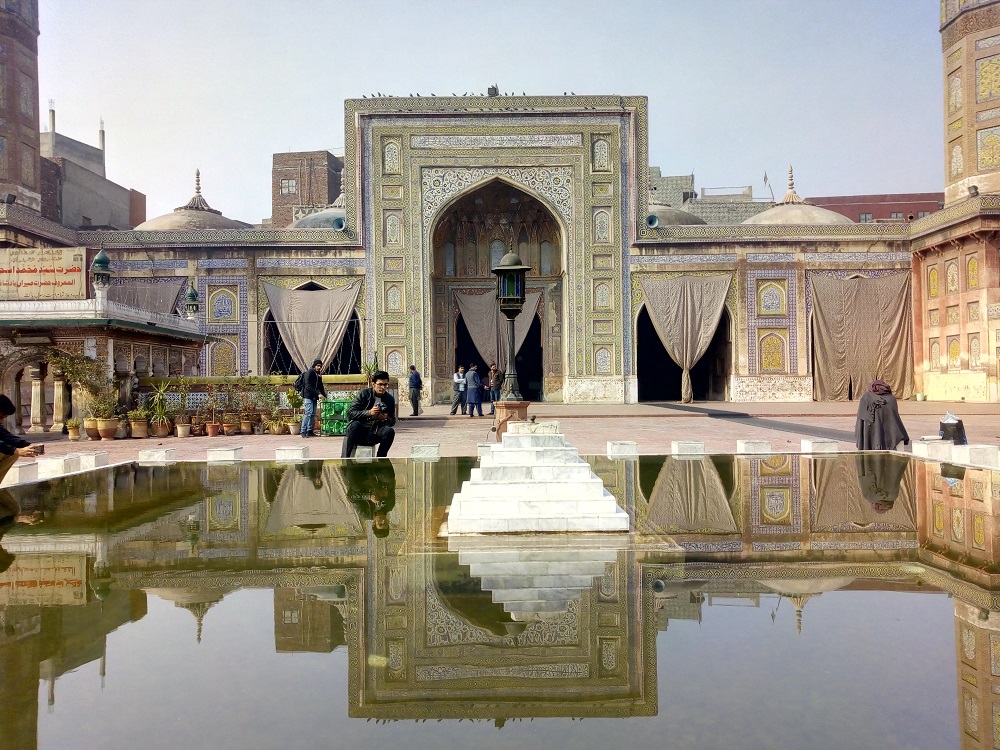Around the World Staycation Series – Lahore

Located in the northeastern Indus Plains along the Ravi River, Lahore stands as the capital of the prosperous Punjab province of Pakistan. The city rests along the Indo-Pakistani border and is the second most populous city in the country, boasting a well-developed economy and budding tourism industry due to its cultural significance and politically salient history.

History
With references dating back as early as the 2nd century with the publications of the Egyptian geographer, Ptolemy, Lahore has been the subject of many regional disputes due to its strategic, resource-rich location. After various transitions of power, Lahore reached its height under the Mughal Dynasty dating from 1524 to the mid-18th century. During this Golden Age of the city of Lahore, Mughal rule transformed the city into an architectural stronghold, with many of its structures still standing today.

From 1849 to 1947, modern-day Pakistan was a part of the British Indian Empire. Throughout British rule, there was a call to create an Islamic state due to religious violence between British Indian Muslims, largely residing in the western provinces, and Hindus. In 1930, the Declaration of Independence of India was signed in Lahore, followed by the signing of the Lahore Resolution in 1947 which effectively declared Pakistan as a state and homeland for Indian Muslims. Since then, Indo-Pakistani tensions have mounted even further due to territorial disputes over the Kashmir region due north of the city of Lahore.
Culture
Due to its major cultural significance throughout history, Lahore is often referred to as “The Heart of Pakistan”. Largely due to its architectural prowess developed under the Mughal Dynasty and British colonial rule, many architectural enthusiasts flock to the city to marvel at centuries-old monuments, palaces, and religious sites. The Lahore Fort and Shalimar Gardens of the Mughal royal families remain one of the most visited sites in the country and were declared a joint UNESCO World Heritage Site in 1981. Lahore is also considered an educational stronghold in Pakistan, as the home to the oldest university in the country, the University of Punjab, as well as politically salient monuments such as the Lahore Museum and the Minar-e-Pakistan monument honoring British Indian and Pakistani independence.
With nearly 95% of the population identifying as Muslim, Pakistani culture is heavily rooted in the Islamic tradition and Lahore is no exception. From the intricate mosaics of the Wazir-Khan Mosque to the Badshahi Mosque – the fifth-largest mosque in the world – Lahore can provide you with a full day’s itinerary exploring the beautiful religious sites. City-wide festivals for Eid al-Fitr, marking the end of Ramadan in Muslim faith, is a heavily attended event throughout the city. It is a largely patriarchal society, with men as the heads of the household and women fulfilling the role of wife and mother; while this may differ from Western perceptions of gender roles, it is important to be cognizant and respectful of other cultures when traveling.

As the capital of the Punjab province, the city of Lahore is a hub for commerce and recreation in Pakistan. Traditional clothing in the form of the shalwar-kameez – a long shirt and loose-fitting pants – is the most common fashion. It is a linguistically diverse region, with Punjabi, Urdu, and English as the most widely spoken languages. Lahore also hosts a budding film industry referred to as “Lollywood” and many cricket stadiums for both amateurs and professionals are scattered throughout the city.
Cuisine
Traditional Pakistani cuisine packs huge spice and flavor. Most dishes include some form of meat – lamb, chicken, or beef – to create meals such as kebabs and curries. A fan favorite is Aloo gobi, a delicious potato and cauliflower curry! Common spices in both savory and sweet dishes include cardamom, ginger, and masala just to name a few. While much of the cuisine is meat-based, lentils are also a common base to make your dish veggie-friendly and still pack that spicy flavor. Desserts such as Zarda and Kheer are sweet, nut-based treats served with a delicious chai tea to finish the meal.
Wandering through the streets of Lahore, you would be sure to find your new favorite kebab stand or try a new chai tea flavor at one of the city’s many bustling food hubs. Food Street and MM Alam Road boast some of the most popular restaurants in the city, with every type of cuisine you can imagine. It is also a popular photo-op spot!

If you would like to learn more about this incredible city, its history and cuisine, check out these sites:
https://www.britannica.com/place/Pakistan/History#ref23662
https://www.britannica.com/place/Lahore
https://www.newworldencyclopedia.org/entry/Lahore
https://whc.unesco.org/en/statesparties/pk
https://www.cnn.com/travel/article/pakistan-best-food/index.html


